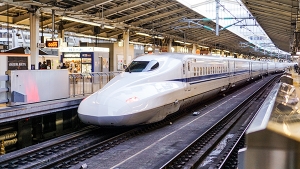7.2 Managing Frugal Innovations
 Managing frugal innovation is a very broad topic. The previous modules covered the most important aspects of frugal innovation and also some issues concerning management of this type of innovation.
Managing frugal innovation is a very broad topic. The previous modules covered the most important aspects of frugal innovation and also some issues concerning management of this type of innovation.
In this module the following rules of managing frugal innovations will be explained:
- Engage and Iterate instead of Research and Development
- Flexing assets
- Sustainable solutions
- Shaping consumers behavior
- Importance of prosumers
- Innovative networks
E&I = Engage and Iterate
Engage and Iterate instead of Research and Development – E&I instead of R&D.
Why R&D departments are less important in managing frugal innovation?
- They are usually time-consuming and inflexible.
- They are more focused on quantity of outputs rather than on quality of the outputs and their value for customers.
- They are complex and expensive. The complexity costs both the companies and their customers more money.
- They are environmentally unfriendly. For instance, the complexity and planned obsolescence of mobile phones increase the production of waste.
- Customers’ role is to validate a product idea/prototype rather than co-create solutions.
Do you know that…
Sophisticated products are seemingly attractive. Most customers use only 10% of functionalities available in apps such as Microsoft Word.
125 million of mobile phones end up in landfill as they are planned to be obsolate after 2 years of use.
Source: Based on: Radjou, N., & Prabhu, J. C. (2014). Frugal innovation: how to do better with less (1st ed.). New York: PublicAffairs.
How to engage and Iterate
Work fast – the faster adaption to changes the better. Don’t stick to projects, only because you started them. You can always change priorities, reallocate resources and thus be first who respond to market needs. Eliminate silos and reduce bureaucracy to minimum – this will help you to work faster.
Involve end-users at all stages of the product design. It will prevent you from a product failure. What is more, keep thing simple. Sophisticated products are desired by engineers, and less likely by an average customers.
Use external resources, experts and R&D. Such co-operation in network will allow you to make you design process more flexible and faster.
 Example
Example
TGV (Train à Grande Vitesse) is a well-known high-speed train operated by a French state-owned company SNCF (a national railway operator). TGV is still one of the fastest train operating in conventional train service in the world (wheeled train) with a competitor in China (China’s Shijiazhuang–Wuhan high-speed railway), who have surpassed the speed of TGV
 Despite the reputation of an innovator, SNCF began to lose passengers, as the speed was not everything, it did not wholly determine passenger satisfaction from the journey. How could they launch new services and gain new customers if an average product development process lasted 5-10 years?
Despite the reputation of an innovator, SNCF began to lose passengers, as the speed was not everything, it did not wholly determine passenger satisfaction from the journey. How could they launch new services and gain new customers if an average product development process lasted 5-10 years?
SNCF decided to launch a TGV Lab in order to practice frugal innovation techniques.
The results? Fast innovation projects which are prioritized every six months.
The outcomes? SMS based system enabling train crews to communicate with hearing-impaired passengers instead of previously planned video monitors, which would be more expensive and time-consuming for implementation.

